Indian Highways - And the historic Kos Minars or Mile Pillars
On Indian Highways, you can "expect the unexpected". You find any and everything and see the strangest sights, on our highways. Actually travelling on our highways, is a unique experience and gives you possibly the best insights about India. Given this, we are starting this new series of stories that will provide glimpses of "Life on Indian Highways".
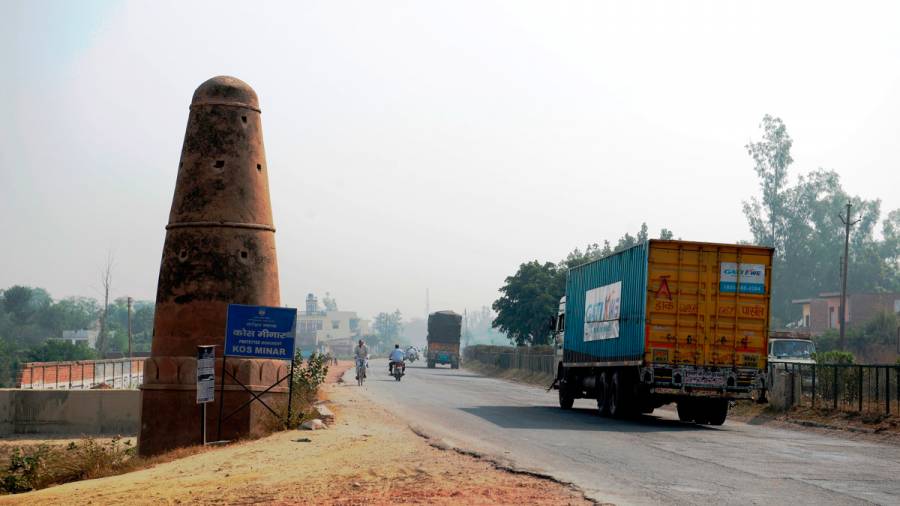 Kos Minars are part of an ancient Indian road distance marking system dating back to the 16th Century.
Kos Minars are part of an ancient Indian road distance marking system dating back to the 16th Century.
Not many people, who have traveled on Indian Highways, are aware about "Kos Minars". The Kos Minars or "Mile Pillars" are medieval milestones that were built by the 16th-century Afghan Ruler of India, Sher Shah Suri. He also built the modern version of the ancient Grand Trunk Road.
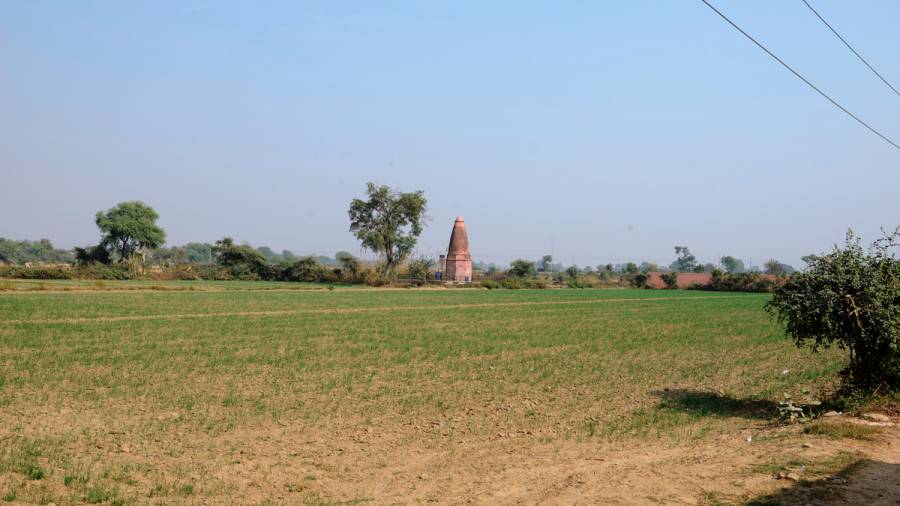 This Kos Minar stands in field adjacent to the Agra-Kolkata National Highway 19.
This Kos Minar stands in field adjacent to the Agra-Kolkata National Highway 19.
Mughal Emperor Akbar too constructed Kos Minars on the main highways across his empire, to mark the distance. Kos is a medieval measurement of distance denoting approximately 3 km and "Minar" is a Persian word for tower. A Kos Minar is a solid round pillar; around 30 feet in height that stands on a masonry platform built with bricks and plastered over with lime.
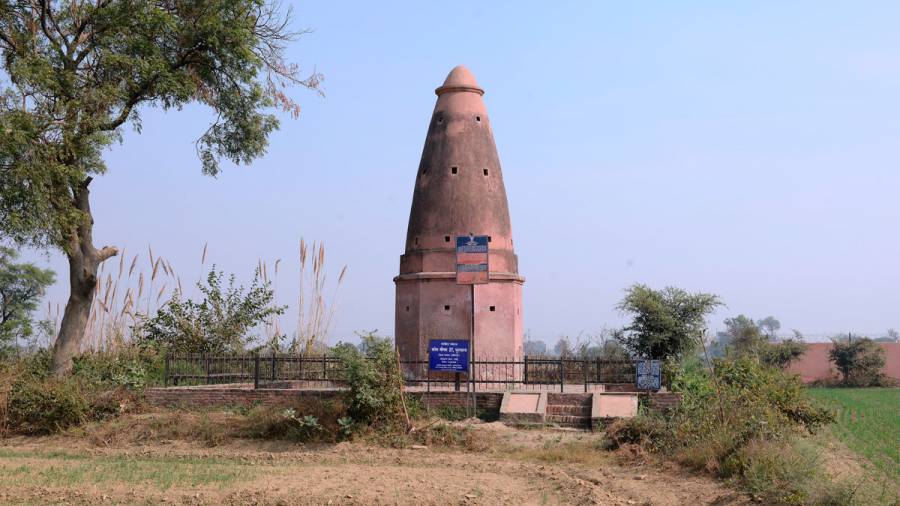 Fortunately, this Kos Minar has been protected with a railing and there are several boards explaining its significance.
Fortunately, this Kos Minar has been protected with a railing and there are several boards explaining its significance.
Though not very impressive architecturally, being milestones, they were an important part of communication in a large empire and they were also resting spots for travellers. At one time Kos Minars were built along royal routes from Agra to Ajmer, Agra to Lahore, Agra to Mandu, etc, and it is believed that during the rule of Mughals, there were around 600 Kos Minars, but now only about 110 survive in places like UP, Delhi, Haryana, and Rajasthan and so on.
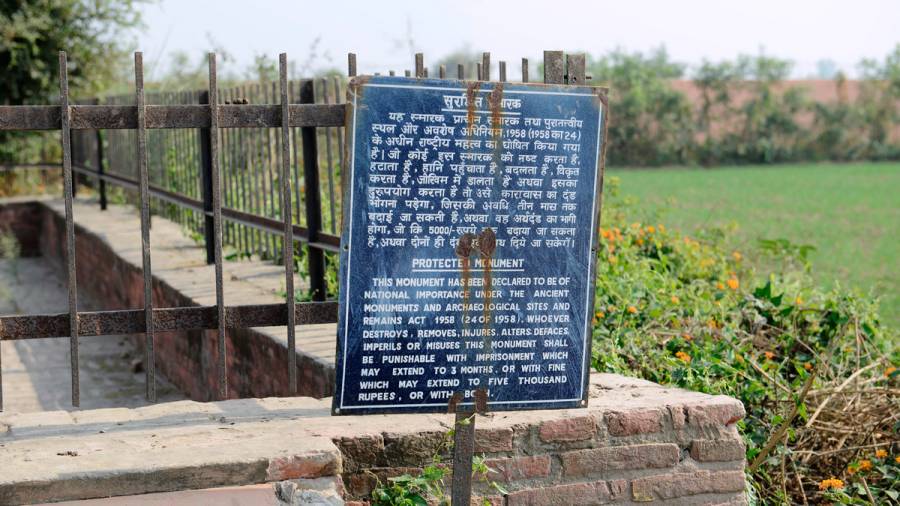 The Archaeological Survey of India has now given Kos Minars a protected status.
The Archaeological Survey of India has now given Kos Minars a protected status.
Fortunately, the Archaeological Survey of India (ASI) has now recognized their historical significance and given them protected status by labeling them as an integral part of India's ''National Communication System". The courts have also ordered that encroachments around them be cleared away, but as you can see in the accompanying photos, while one Kos Minar which is in a field adjacent to the Agra- Kolkata National Highway 19 (part of the Grand Trunk Road) has been barricaded and given some protection, the other one a few hundred kms away, stands completely neglected with just a "Protected Monument" board placed in front of it.
 This Kos Minar may have a protected monument board in front of it, but it's neglected and prone to vandalism.
This Kos Minar may have a protected monument board in front of it, but it's neglected and prone to vandalism.
Sadly people who drive by have no idea of the importance of these Kos Minars and some local people I spoke to said, "The government has put these up for pigeons to stay in them!" These Kos Minars, which were once described as a "marvel of India" by early European travellers like Sir Thomas Roe, need to be protected and preserved and some of them could easily be turned into tourist spots by providing proper information and making facilities for highway travellers to stop for a break in their vicinity.
 Sadly many local people are under the impression that the government has built Kos Minars, as nesting places for pigeons!
Sadly many local people are under the impression that the government has built Kos Minars, as nesting places for pigeons!
Now we may have the Google God to show us our way, but there is no way it can match up to the rich legacy of these Kos Minars, which for centuries have acted as road guides for millions of travellers. So next time you see a Kos Minar, don't just drive by. Instead stop and pay obeisance to this unique Indian distance and road marker.
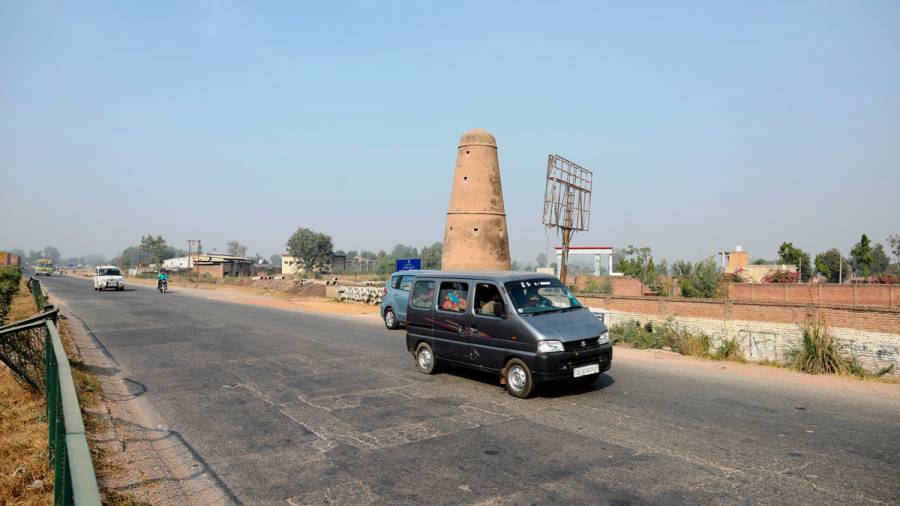 Most motorists drive past Kos Minars, without ever knowing their historical value or significance.
Most motorists drive past Kos Minars, without ever knowing their historical value or significance.
Photos courtesy Makarand Baokar
Also see:
Life on Indian Highways - The Good, the Bad and the Ugly
Indian Highways - And our toll booths fortified with steel pipes
Indian Highways - The common and strange sights
Indian Highways - and more common and strange sights
Indian Highways - And the disappearance of trees and milestones
More of - Shopping on Indian Highways
Indian Highways - And the vast variety of vehicles














